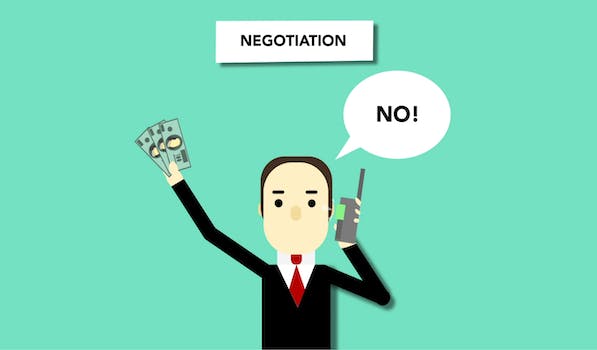How To Start A Business Low Investment
“Start your dream business without breaking the bank.”
Introduction
Starting a business with low investment can be a challenging task, but it is not impossible. With the right mindset, planning, and execution, anyone can start a successful business without breaking the bank. In this article, we will discuss some tips and strategies on how to start a business with low investment.
5 Low-Cost Business Ideas for Aspiring Entrepreneurs
Starting a business can be a daunting task, especially when you don’t have a lot of money to invest. However, with the right mindset and a little creativity, it is possible to start a successful business with low investment. In this article, we will explore five low-cost business ideas for aspiring entrepreneurs.
1. Online Store
One of the easiest and most affordable ways to start a business is by creating an online store. With platforms like Shopify and WooCommerce, you can set up an online store in a matter of hours. You can sell anything from handmade crafts to digital products like ebooks and courses. The best part about an online store is that you don’t need to rent a physical space, which saves you a lot of money.
2. Social Media Management
If you’re good at social media, you can start a social media management business. Many small businesses struggle with managing their social media accounts, and they’re willing to pay someone to do it for them. You can offer services like creating content, scheduling posts, and managing customer interactions. All you need is a computer and internet connection to get started.
3. Personal Shopper
If you have a passion for fashion, you can start a personal shopping business. Many people don’t have the time or expertise to shop for clothes, and they’re willing to pay someone to do it for them. You can offer services like wardrobe consultations, personal shopping trips, and styling advice. You don’t need a physical store to start this business, and you can work from home.
4. Cleaning Services
Cleaning services are always in demand, and you can start this business with very little investment. You can offer services like house cleaning, office cleaning, and carpet cleaning. You’ll need some basic cleaning supplies like a vacuum cleaner, mop, and cleaning solutions. You can start by offering your services to friends and family, and then expand your business as you get more clients.
5. Pet Sitting
If you love animals, you can start a pet sitting business. Many pet owners need someone to take care of their pets while they’re away, and they’re willing to pay for it. You can offer services like dog walking, pet feeding, and pet sitting. You’ll need some basic supplies like leashes, food bowls, and pet toys. You can start by offering your services to friends and family, and then expand your business as you get more clients.
In conclusion, starting a business with low investment is possible if you’re willing to put in the effort. These five low-cost business ideas are just a starting point, and there are many other opportunities out there. The key is to find something that you’re passionate about and that meets a need in the market. With hard work and dedication, you can turn your business into a success.
The Ultimate Guide to Starting a Business on a Shoestring Budget

Starting a business can be a daunting task, especially when you have limited funds. However, with the right mindset and approach, it is possible to start a business with low investment. In this article, we will guide you through the process of starting a business on a shoestring budget.
1. Identify your niche
The first step in starting a business is to identify your niche. What are you passionate about? What skills do you have? What problems can you solve? These are some of the questions you need to ask yourself when identifying your niche. Once you have identified your niche, research the market to determine if there is a demand for your product or service.
2. Create a business plan
A business plan is a roadmap that outlines your business goals, strategies, and financial projections. It is essential to have a business plan, even if you are starting a business with low investment. Your business plan will help you stay focused and organized, and it will also be useful when seeking funding from investors or lenders.
3. Determine your budget
Starting a business with low investment means that you need to be mindful of your budget. Determine how much money you have available to invest in your business and create a budget that reflects your financial situation. Be realistic about your expenses and prioritize your spending based on what is essential for your business.
4. Choose a business structure
There are several business structures to choose from, including sole proprietorship, partnership, LLC, and corporation. Each structure has its advantages and disadvantages, so it is essential to choose the one that best suits your business needs. Consult with a lawyer or accountant to help you make an informed decision.
5. Register your business
Once you have chosen your business structure, you need to register your business with the appropriate authorities. This may include registering your business name, obtaining a tax ID number, and obtaining any necessary licenses and permits.
6. Build your brand
Your brand is your business’s identity, and it is essential to build a strong brand that resonates with your target audience. This includes creating a logo, developing a website, and establishing a social media presence. You can do much of this yourself, or you can hire a freelancer or agency to help you.
7. Start marketing your business
Marketing is essential for any business, and there are many low-cost ways to market your business. This includes networking, word-of-mouth marketing, social media marketing, and content marketing. Determine which marketing strategies are most effective for your business and focus on those.
8. Monitor your finances
It is essential to monitor your finances regularly to ensure that you are staying within your budget and making a profit. This includes tracking your expenses, invoicing your clients, and keeping accurate records. Consider using accounting software to help you manage your finances more efficiently.
In conclusion, starting a business with low investment is possible, but it requires careful planning and execution. By following these steps, you can start a successful business on a shoestring budget. Remember to stay focused, be patient, and never give up on your dreams. Good luck!
10 Steps to Launching a Successful Business with Minimal Investment
Starting a business can be a daunting task, especially when you have limited funds. However, with the right mindset and approach, it is possible to launch a successful business with minimal investment. In this article, we will discuss 10 steps to help you start a business with low investment.
1. Identify your niche
The first step to starting a business is to identify your niche. What are you passionate about? What skills do you possess? What problems can you solve? Answering these questions will help you identify a business idea that aligns with your interests and skills.
2. Conduct market research
Once you have identified your niche, it is important to conduct market research. This will help you understand your target audience, competition, and industry trends. You can use online tools such as Google Trends and social media to gather information about your market.
3. Create a business plan
A business plan is a roadmap that outlines your business goals, strategies, and financial projections. It is important to create a business plan to help you stay focused and organized. You can use online templates or seek the help of a business consultant to create a business plan.
4. Determine your budget
Before launching your business, it is important to determine your budget. This will help you identify the resources you need and how much money you can afford to invest. You can start by creating a list of expenses such as rent, equipment, and marketing.
5. Choose a business structure
Choosing a business structure is an important decision that will affect your taxes, liability, and ownership. You can choose from sole proprietorship, partnership, LLC, or corporation. It is important to consult with a lawyer or accountant to help you choose the right structure for your business.
6. Register your business
Once you have chosen a business structure, it is important to register your business with the state. This will help you obtain a tax ID number and other necessary licenses and permits. You can visit your state’s website or seek the help of a business consultant to register your business.
7. Build your brand
Building a strong brand is essential for the success of your business. You can start by creating a logo, website, and social media profiles. It is important to create a consistent brand image that reflects your business values and personality.
8. Launch your business
After completing the above steps, it is time to launch your business. You can start by offering your products or services to family and friends. You can also attend networking events and use social media to promote your business.
9. Monitor your finances
It is important to monitor your finances to ensure that you are staying within your budget and making a profit. You can use accounting software or seek the help of an accountant to manage your finances.
10. Stay motivated
Starting a business can be challenging, but it is important to stay motivated. Surround yourself with supportive people and celebrate your successes. Remember that every setback is an opportunity to learn and grow.
In conclusion, starting a business with low investment is possible if you follow the above steps. Remember to stay focused, organized, and motivated. With hard work and dedication, you can launch a successful business that aligns with your passions and skills.
How to Bootstrap Your Way to Business Success: Tips and Tricks
Starting a business can be a daunting task, especially if you don’t have a lot of money to invest. However, with the right mindset and approach, it is possible to bootstrap your way to business success. Here are some tips and tricks to help you get started.
1. Start with a solid business plan
Before you start investing any money, it’s important to have a solid business plan in place. This will help you define your goals, target market, and strategies for success. You can find plenty of resources online to help you create a business plan, or you can hire a professional to help you.
2. Focus on your strengths
When you’re starting a business with low investment, it’s important to focus on your strengths. This means identifying your skills and expertise and finding a niche where you can excel. For example, if you’re a great writer, you could start a content marketing business. If you’re a skilled graphic designer, you could start a design agency.
3. Use free or low-cost tools
One of the advantages of starting a business in the digital age is that there are plenty of free or low-cost tools available to help you get started. For example, you can use free website builders like Wix or WordPress to create a website for your business. You can also use free tools like Canva to create marketing materials.
4. Leverage social media
Social media is a powerful tool for promoting your business and building a following. You can use platforms like Facebook, Twitter, and Instagram to connect with potential customers and share your products or services. Make sure to post regularly and engage with your followers to build a strong online presence.
5. Network and collaborate
Networking and collaboration are key to building a successful business. Attend industry events, join online communities, and reach out to other entrepreneurs in your niche. You never know who you might meet or what opportunities might arise from these connections.
6. Be frugal
When you’re starting a business with low investment, it’s important to be frugal with your spending. Look for ways to save money on expenses like office space, equipment, and supplies. You can work from home, buy used equipment, and use free software to keep costs down.
7. Focus on customer service
One of the best ways to build a successful business is to focus on customer service. Make sure to respond promptly to customer inquiries and complaints, and go above and beyond to make sure your customers are satisfied. Happy customers are more likely to refer you to others and become repeat customers themselves.
8. Stay motivated
Starting a business can be a long and challenging journey, but it’s important to stay motivated and focused on your goals. Celebrate your successes, learn from your failures, and keep pushing forward. Remember why you started your business in the first place and keep that vision in mind as you work towards success.
In conclusion, starting a business with low investment is possible if you have the right mindset and approach. Focus on your strengths, use free or low-cost tools, leverage social media, network and collaborate, be frugal, focus on customer service, and stay motivated. With these tips and tricks, you can bootstrap your way to business success.
From Side Hustle to Full-Time Gig: How to Build a Business with Little Money
Starting a business can be a daunting task, especially when you don’t have a lot of money to invest. However, with the right mindset and approach, it is possible to build a successful business with little investment. In this article, we will explore some tips and strategies for starting a business with low investment.
1. Start with a side hustle
One of the best ways to start a business with little investment is to begin with a side hustle. A side hustle is a part-time job or business that you can do alongside your regular job. This allows you to test the waters and see if your business idea has potential without risking too much money.
2. Identify a need in the market
Before starting any business, it’s important to identify a need in the market. Look for gaps in the market that you can fill with your product or service. This will help you to create a business that is in demand and has the potential to grow.
3. Keep your costs low
When starting a business with little investment, it’s important to keep your costs low. Look for ways to save money on things like office space, equipment, and marketing. Consider using free or low-cost tools and resources to help you get started.
4. Use social media to your advantage
Social media is a powerful tool for promoting your business and reaching potential customers. Use platforms like Facebook, Instagram, and Twitter to build a following and promote your products or services. This can be a cost-effective way to market your business and reach a wider audience.
5. Build a network
Networking is key to building a successful business. Attend industry events, join online groups, and connect with other entrepreneurs in your field. This can help you to build relationships, learn from others, and find potential customers or partners.
6. Focus on customer service
When starting a business with little investment, it’s important to focus on providing excellent customer service. This can help you to build a loyal customer base and generate positive word-of-mouth marketing. Make sure to respond to customer inquiries promptly and go above and beyond to meet their needs.
7. Be willing to pivot
Starting a business is a learning process, and it’s important to be willing to pivot if things aren’t working out. Don’t be afraid to change your business model or try new things if you’re not seeing the results you want. This can help you to stay agile and adapt to changing market conditions.
In conclusion, starting a business with little investment is possible with the right mindset and approach. By starting with a side hustle, identifying a need in the market, keeping costs low, using social media to your advantage, building a network, focusing on customer service, and being willing to pivot, you can build a successful business without breaking the bank. Remember, starting a business is a journey, and it’s important to stay focused, stay positive, and keep learning along the way.
Conclusion
Starting a business with low investment requires careful planning, research, and creativity. It is important to identify a profitable niche, develop a solid business plan, and utilize cost-effective marketing strategies. With dedication and hard work, it is possible to build a successful business without breaking the bank.






